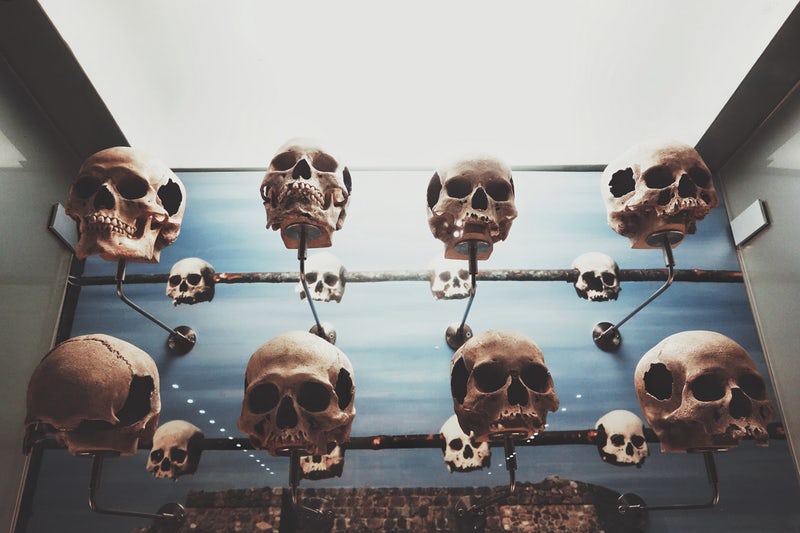Samurai imagined the varied ways they could die everyday, and ritual suicide – seppuku – was a norm. Roman stoics imagined death as a “return home”, as expected as a bowl breaking: no more worthy of upset since it is the nature of the world–just inevitable – “these things happen” – as Marcus Aurelius says. Though of course stoics and samurais were, and are, human, they view upset as stemming from misexpectation and avoidance, rather than the event itself. Consider that immortals in mythology, and their modern day equivalents The Lord of The Rings and Star Trek, are often envious of the gift of death because endless opportunity gives no start to motivation; living forever is boring anguish.
For centuries it was traditional to go to Church and think about goodness in preparation for the next life. In Medieval Europe it was tradition to have a skull on the study desk just to remind you what little time you had left; it was called Memento Mori, “remember you must die”, and featured in almost all kinds of art.
Consumers of memento nori are like the nurses and doctors of today, that inevitably get sad about deaths, but are calmer for it and appreciate that our lives are artificially long, thanks to drugs research and surgeries. For past generations death was normalised, since children regularly died before their eighteenth year, and an average old man or woman would be lucky to make 40.
The average life expectancy, for instance, in recently industrial Manchester of 1842, ranged from 17-38 increasing by profession–labourer, trader, owner. That was just 175 years ago. Since then life expectancies have shot up (though is 50 in Burundi Africa) along with our expectations of life and in turn our emotional alienation from death. The majority of accidents and attempted suicides are regretted because we value living. Our pessimism may make gene perpetuation hollow but when it comes to the end we tend to treat life truly as a gift.
For as much as we complain about life as soon as we face oblivion we suddenly value life all the more. The use of death is the gratitude it fosters for life and the motivation to seize the day. Because by facing death we come, in fact, to face the highlight reel of what is most important and therefore worthwhile in life: the memories, the regrets of the dying.
A nurse named Bronnie Ware of The Top Five Regrets of the Dying compiled the top five regrets of her fading patients
They are:
1. I wish I’d had the courage to live a life true to myself, not the life others expected of me.
2. I wish I hadn’t worked so hard.
3. I wish I’d had the courage to express my feelings.
4. I wish I had stayed in touch with my friends.
5. I wish that I had let myself be happier.
Of course, the regrets of the dying are worth challenging – how we feel at the end may be wrong compared to how we felt earlier on; we go through multiple selves as we age, circumstances are forgotten–nonetheless those essentials stay true across the board of social science research, per the fascinating Grant and Terman studies – which tracked lifetimes – and concluded: “the only thing that really matters in your life is your relationships with other people”.
But regret is the negative side of the life guide model: What would you celebrate, what would you remember fondly? That is the best guide to a greater future, and a happier more grateful present.


2 thoughts on “Regrets and The Use of Death”